Spring is deepening in my region. The yellow of early blooming jonquil and daffodil bulbs and the white of the nodding snowflakes and anemones have been joined by brightly coloured tulips and soon, the blowsy ranunculus. Blossoms are decorating the pomme (apple and pear) and stonefruit trees, along road verges and in orchards. Shiny new leaves are sprouting on deciduous trees, blackberry brambles and raspberry canes. The vigorous winds have finally died down and the days are decidedly warmer and brilliantly sunny. In paddocks across the region, calves and lambs play merrily and wild bunnies enjoy the season’s new shoots.
I celebrated the first day of calendrical Spring, 1 September in Australia, by decorating my house for Oestre and the upcoming Spring Equinox on 23 September. Many Oestre traditions and symbols would be familiar to those who celebrate Easter.
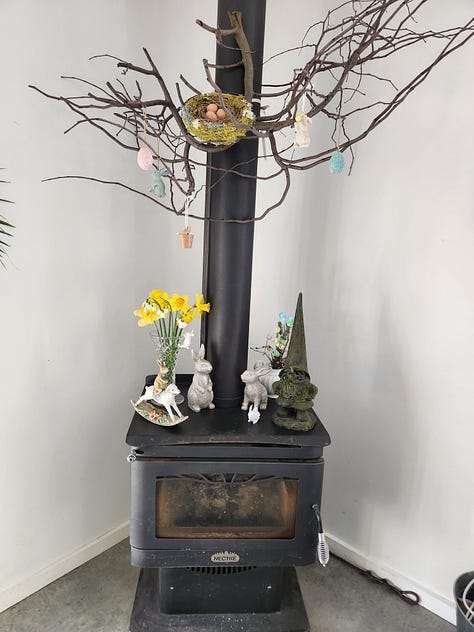
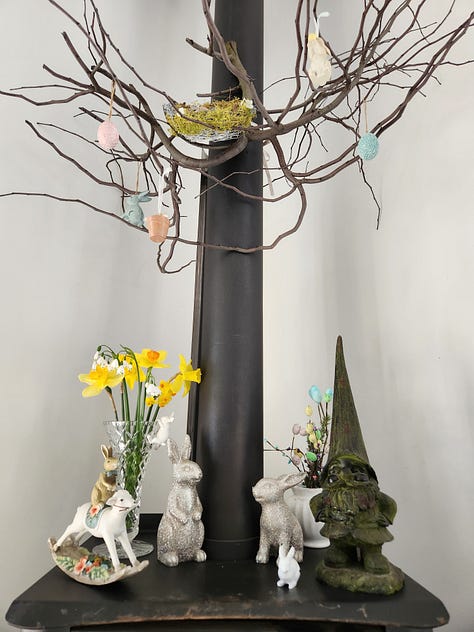

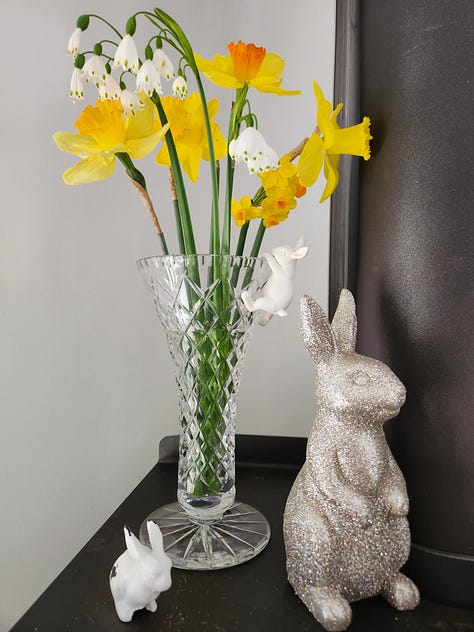
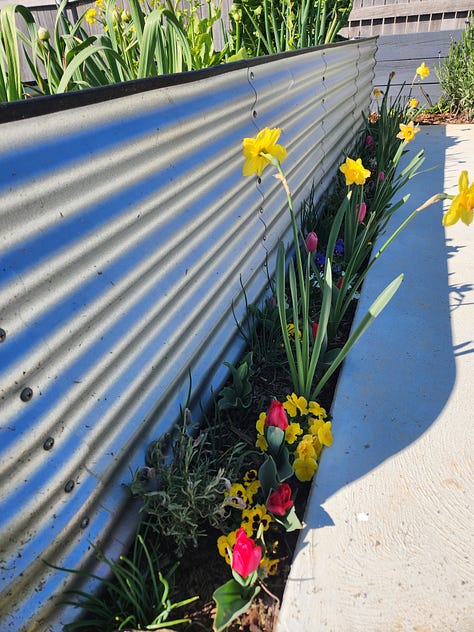
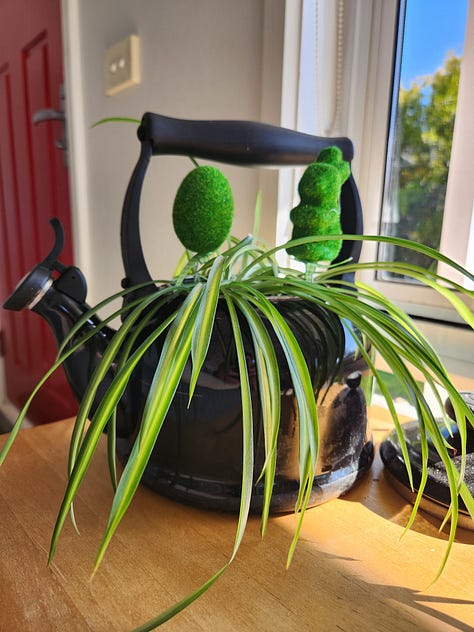
We’ll explore the history and folklore of Oestre and Easter in the next two episodes. In this episode, let’s dive into Eastern European Spring Equinox celebrations, particularly the ritual of drowning the Morana.
We first met Morana in the Wheel & Cross podcast’s Episode 2 - Holle's Day and the First Day of Winter, in the section about The Winter Queens.
She is called Marzena in Polish, Marena in Russian, Morana in Czech, Bulgarian, Slovene, and Serbo-Croatian, Morena or Kyselica in Slovak and Macedonian, Mara in Belarusian and Ukrainian. She is also known as Marui or Marukhi, Maržena, Moréna, Mora, Marmora, More, and Kikimora in different Eastern European regions.
Morana is a Slavic goddess associated with winter, death, and rebirth. In Slavic mythology, she is often depicted as a fearful old hag like the Baba Yaga or as a beautiful but stern woman with long, flowing black hair, dressed in white or black garments. Morana represents the cold, dark months of winter and the dormant period of nature.
As the goddess of winter, Morana is both feared and respected. She is believed to bring frost and cold winds and in some traditions, Morana is seen as the personification of death itself. She rules over the realm of the dead during the winter months.
However, Morana is not solely associated with death and darkness. She also symbolises the cyclical nature of life and the promise of rebirth. In Slavic folklore, it is believed that Morana's departure marks the end of winter and the beginning of spring. Her departure is celebrated with various rituals and customs that signify the renewal and awakening of nature.
The Eastern European tradition of killing Morana either by drowning or burning is a unique and fascinating springtime ritual. This tradition originates from Slavic and Balkan regions and is still celebrated in various countries including the Czech Republic, Slovakia, Poland, Russia, and Bulgaria.
The ritual typically takes place on or around the Spring Equinox, marking the transition from winter to spring. Effigies of Morana are made from straw and dressed in traditional clothes, sometimes decorated with flowers or strung with necklaces made from eggs. The tradition is now usually carried out by children as part of their school activities, and often there is competition to judge the most beautiful Morana effigy.
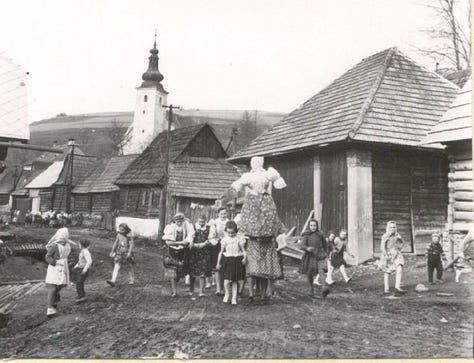
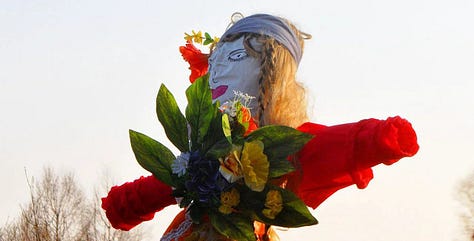
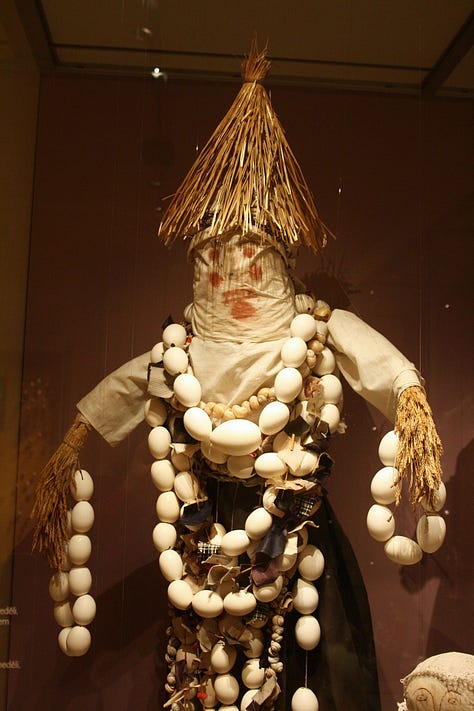
On the day of the ritual, the Morana effigy is carried in procession to a body of water, such as a river or pond. Villagers gather to participate in the ceremony, often dressed in traditional clothes. The effigy is then set adrift on the water and sometimes even burned as a symbolic act of bidding farewell to the cold season and welcoming the warmer months of spring. As the Morana effigies are carried away by currents or consumed by flames, winter is defeated and life triumphs over death.
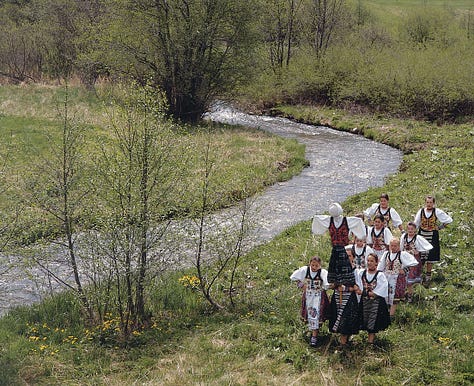
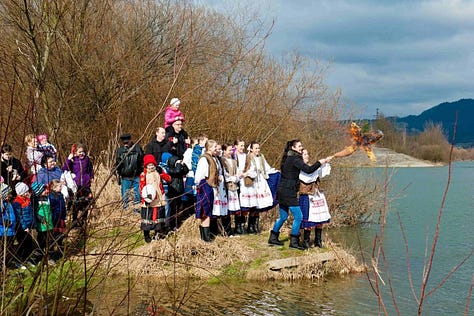

This short video (0:45 secs) depicts children dressed in traditional Slovak clothes dancing around the effigy of Morena to a folk song.
Morena Folk Song Lyrics
Slová: Na volačej streše holubienka nese tak ona hrkuta Morenu nam pyta. My si ju nedame až o Velkej noci bude sa vydavat fialkovem venci...
English: At someone's roof a dove is sitting and it is cooing and asking for our Morena. We won't give her until the Easter day, she will wed in violet wreath...
While the specifics of the drowning or burning Morana ritual may vary from region to region, the underlying theme remains consistent—a celebration of the changing seasons and a powerful metaphor for the renewal of nature. Drowning Morana vividly represents the age-old cycle of life, death, and rebirth, mirroring ancient agricultural rhythms that continue to echo through Eastern European cultures.
Here are a couple more videos about the drowning Morana tradition.
The first one (5:35 mins) provides a good overview of the tradition of drowning and burning Morana.
This next one is a documentary (7:12 mins) showing the tradition of drowning Marzanna in Silesia.
If you want to know more about the history and mythology of the Slavic people, this short (13:29 mins) documentary provides an excellent summary.
Do you celebrate Spring and the Spring Equinox? What’s your favourite seasonal tradition? Stay tuned for next week’s article where we’ll take a deep dive into the history and traditions of Easter. Until then, may your days be marked with increasing warmth and kind weather!
















Share this post